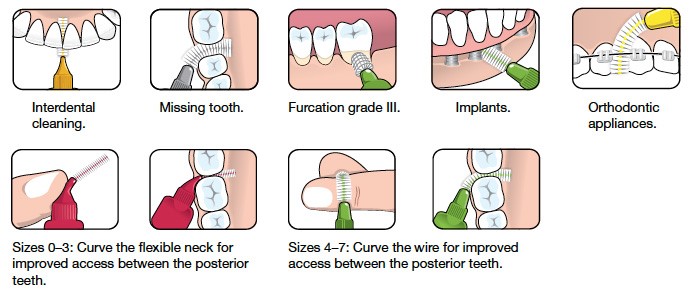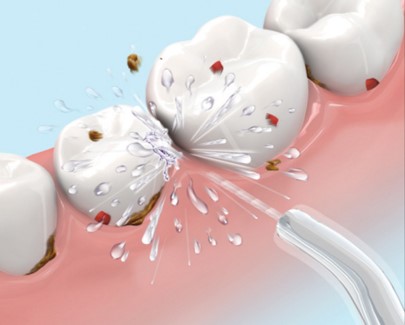Adults General Oral Hygiene
 Brushing your teeth is an important part of your dental care routine.
Brushing your teeth is an important part of your dental care routine.
Brush your teeth twice a day with a soft-bristled brush. Replace your toothbrush every three months.
METHOD
Tilt the brush at 45° angle against the gum line and sweep or roll the brush away from the gum line.
Gently brush the outside, inside and chewing surface of each tooth using short back-and –forth strokes.
Gently brush your tongue to remove bacteria and keep your breath fresh.
 Take about 18 inches of floss and wind most of it around one of your middle fingers. Wind the remaining floss around the same finger of the opposite hand.
Take about 18 inches of floss and wind most of it around one of your middle fingers. Wind the remaining floss around the same finger of the opposite hand.
This finger will take up the floss as it becomes used.
Hold the floss tightly between your thumbs and forefingers.
Guide the floss between your teeth using a gentle rubbing motion. Never snap the floss into the gums.
When the floss reaches the gum line, curve it into a C shape against one tooth. Gently slide it into the space between the gum and the tooth.
Hold the floss tightly against the tooth. Gently rub the side of the tooth, moving the floss away from the gum with up and down motions. Repeat this method on the rest of your teeth.

Mouthrinses are used for a variety of reasons:
✓ To help prevent or control tooth decay,
✓ To freshen breath,
✓ To reduce plaque (a thin film of bacteria that forms on teeth),
✓ To reduce gum disease
✓ To reduce the speed that tartar (hardened plaque) forms on the teeth.
✓ It can be done before or after brushing, but it is not a substitute for brushing or flossing
✓ You may consider, or your dentist may recommend, a mouthrinse with fluoride or antimicrobial agents as part of your daily oral hygiene routine.

These are small head bristles with short handles.
Interdental spaces are areas where bacteria can accumulate, multiply and remain undisturbed increasing risk for periodontal disease.
An interdental brush is to be inserted from the side of the gap that the gum and two teeth form (called interdental triangle).
Insert it into not between tooth but into the gap that within the gum and two teeth.

The WATER FLOSSER is highly effective for removing plaque from hard-to-reach areas and is significantly more effective than interdental brushes for improving gingival health.
Interdental spaces are areas where bacteria can accumulate, multiply and remain undisturbed increasing risk for periodontal disease.
These inserts are designed to clean interdental surfaces, tongue cleansing, orthodontic appliances, fixed restorative appliances, and deeper periodontal pocket areas. The Water Flosser also is a safe and effective approach for cleansing between implants.
